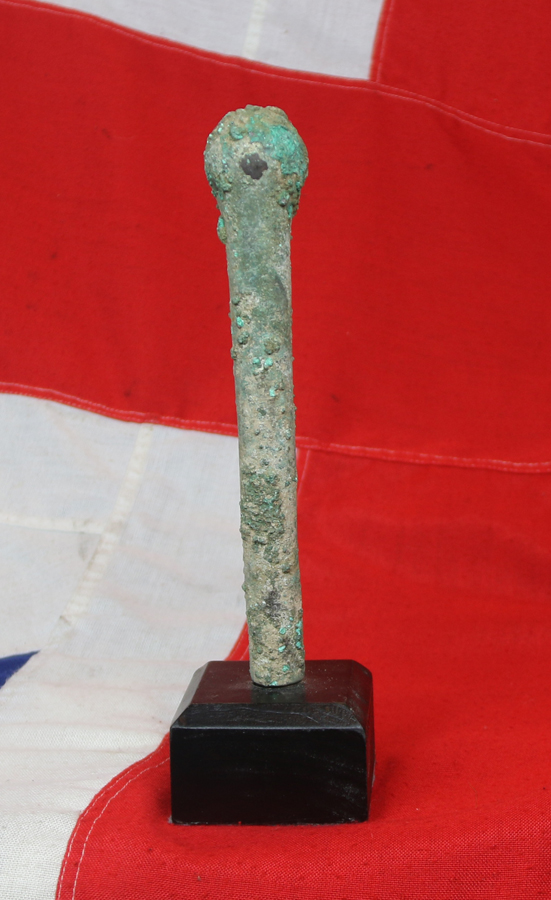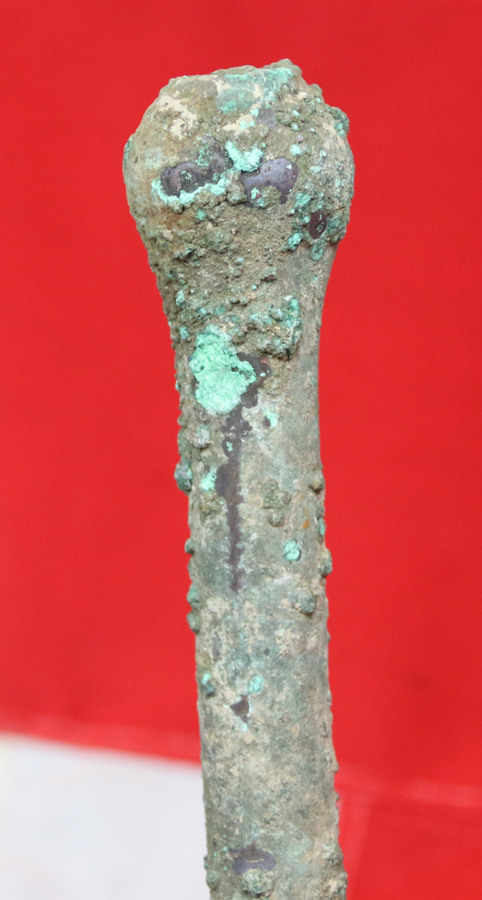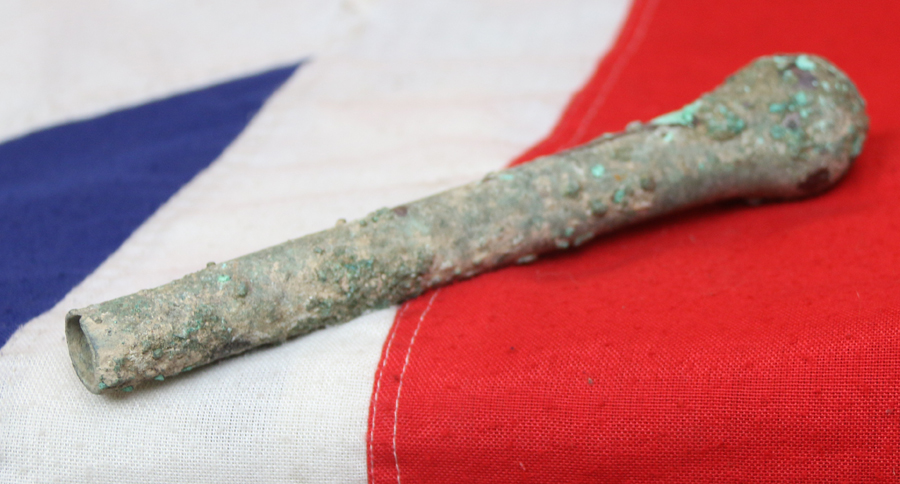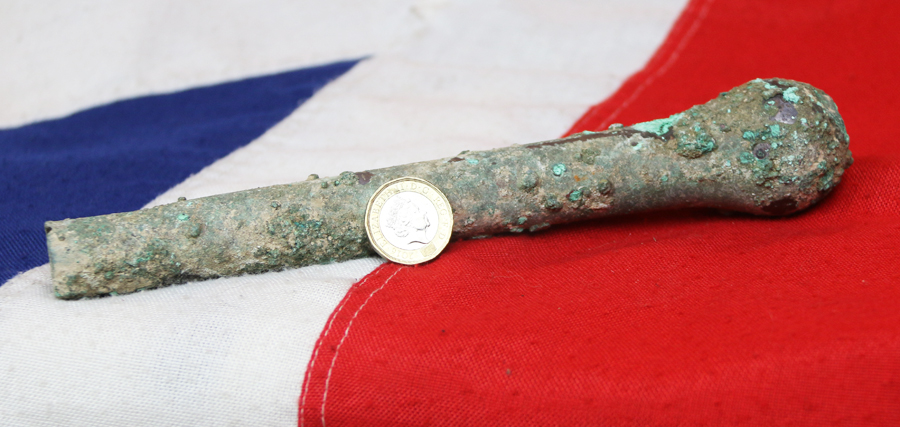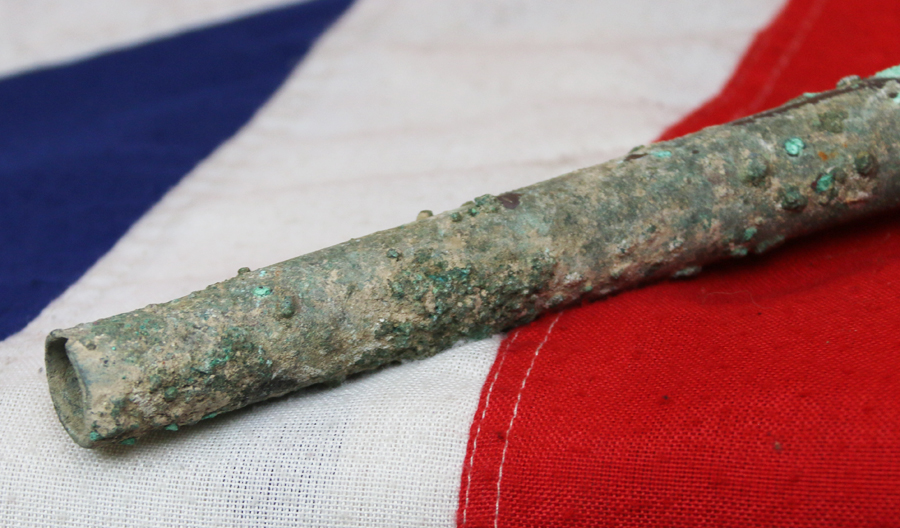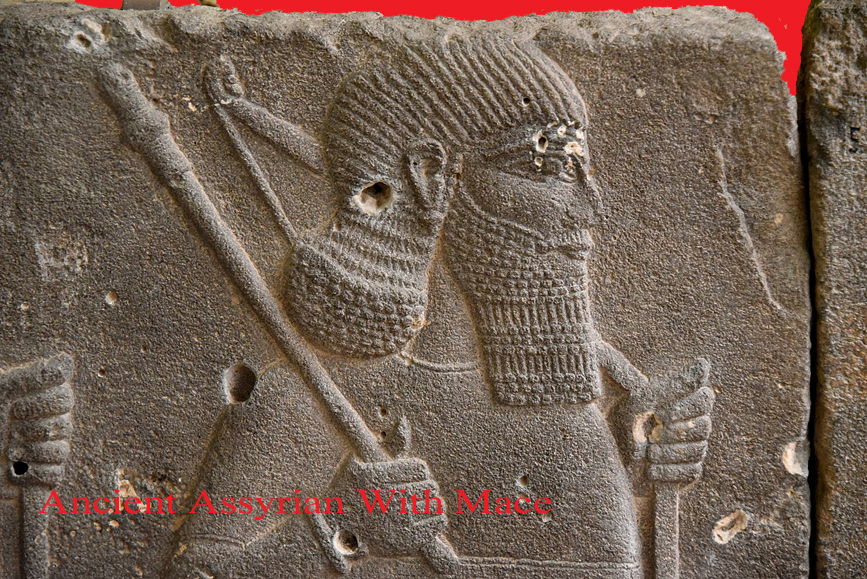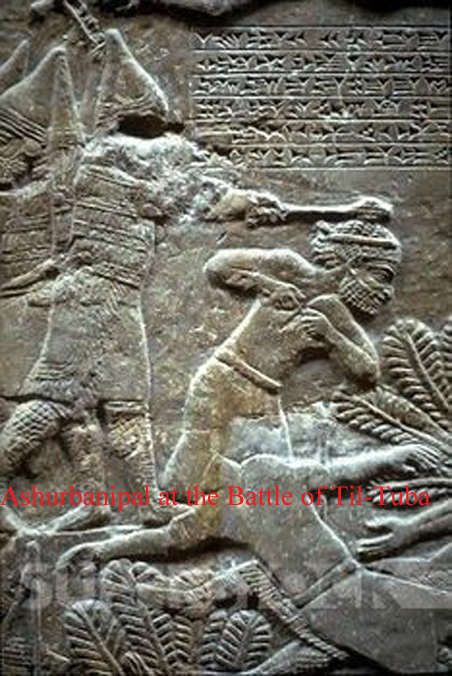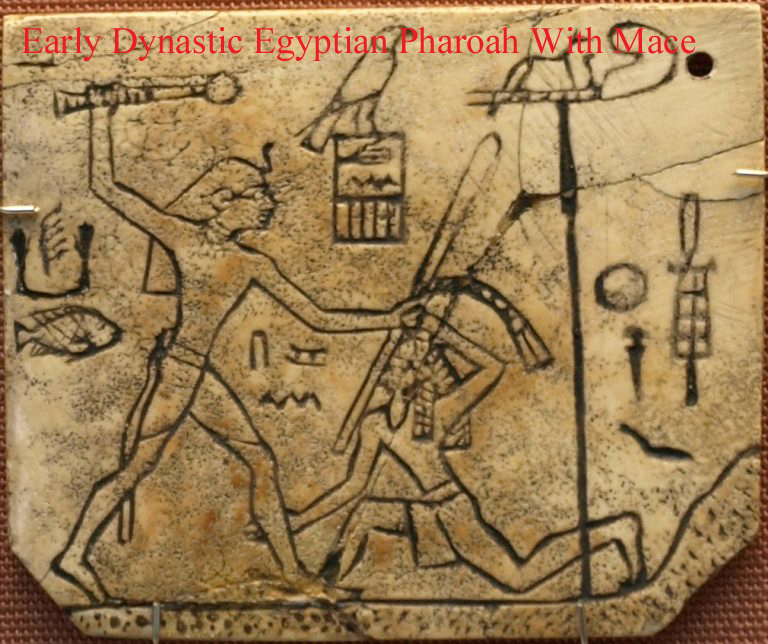A Superb Ancient Bronze Age Mace Head 3000 to 4000 Years Old, From The Age Of Rameses The Great, The Greatest Pharaoh of Ancient Egypt.
Ist to 2nd Millennium B.C.Although displayed on a short stand In use it would have slotted onto a wooden haft. For over 100 years we have been delighted to acquire such fabulous historical original Items such as this, originally collected in the 18th and early 19th century by British noblemen and women touring Europe and the Middle East on their personal expeditions known as a ‘Grand Tour’. Originally placed, after being purchased on their journeys, to be placed on display in the family’s classical gallery or 'cabinet of curiosities', within their country house upon their return home.
A popular pastime in the 18th and 19th century, comprised of English ladies and gentlemen travelling for many months, or even years, throughout classical Europe, and the Middle East, and Western Asiatic region, acquiring antiquities and antiques for their private collections. The use of the stone headed mace as a weapon and a symbol od status and ceremony goes back to the Upper Palaeolithic stone age, but an important, later development in mace heads was the use of metal for their composition. With the advent of copper mace heads, they no longer shattered and a better fit could be made to the wooden club by giving the eye of the mace head the shape of a cone and using a tapered handle.
The Shardanas or warriors from Sardinia who fought for Ramses II against the Hittities were armed with maces consisting of wooden sticks with bronze heads. Many bronze statuettes of the times show Sardinian warriors carrying swords, bows and original maces. Persians used a variety of maces and fielded large numbers of heavily armoured and armed cavalry (see cataphracts). For a heavily armed Persian knight, a mace was as effective as a sword or battle axe. In fact, Shahnameh has many references to heavily armoured knights facing each other using maces, axes, and swords. The enchanted talking mace Sharur made its first appearance in Sumerian/Akkadian mythology during the epic of Ninurta. Roman though auxiliaries from Syria Palestina were armed with clubs and maces at the battles of Immae and Emesa in 272 AD. They proved highly effective against the heavily armoured horsemen of Palmyra. Photos in the gallery of original carvings from antiquity in the British Museum etc.; Ashurbanipal at the Battle of Til-Tuba, Assyrian Art / British Museum, London/ 650-620 BC/ Limestone,, An Assyrian soldier waving a mace escorts four prisoners, who carry their possessions in sacks over their shoulders. Their clothes and their turbans, rising to a slight point which flops backwards, are typical of the area; people from the Biblical kingdom of Israel, shown on other sculptures, wear the same dress, on a gypsum wall panel relief, South West Palace, Nimrud, Kalhu Iraq, neo-assyrian, 730BC-727BC.
A recovered tablet from Egypt's Early Dynastic Period (3150-2613 BCE) shows a Pharaoh smiting his foe with a war mace. The mace is complete with its display stand as shown. Part of an original collection we have acquired, of antiquities, Roman, Greek, Middle Eastern, Viking and early British relics of warfare from ancient battle sites recovered up to and around 220 years ago on a Grand Tour.
Richard Lassels, an expatriate Roman Catholic priest, first used the phrase “Grand Tour” in his 1670 book Voyage to Italy, published posthumously in Paris in 1670. In its introduction, Lassels listed four areas in which travel furnished "an accomplished, consummate traveler" with opportunities to experience first hand the intellectual, the social, the ethical, and the political life of the Continent.
The English gentry of the 17th century believed that what a person knew came from the physical stimuli to which he or she has been exposed. Thus, being on-site and seeing famous works of art and history was an all important part of the Grand Tour. So most Grand Tourists spent the majority of their time visiting museums and historic sites.
Once young men began embarking on these journeys, additional guidebooks and tour guides began to appear to meet the needs of the 20-something male and female travelers and their tutors traveling a standard European itinerary. They carried letters of reference and introduction with them as they departed from southern England, enabling them to access money and invitations along the way.
With nearly unlimited funds, aristocratic connections and months or years to roam, these wealthy young tourists commissioned paintings, perfected their language skills and mingled with the upper crust of the Continent.
The wealthy believed the primary value of the Grand Tour lay in the exposure both to classical antiquity and the Renaissance, and to the aristocratic and fashionably polite society of the European continent. In addition, it provided the only opportunity to view specific works of art, and possibly the only chance to hear certain music. A Grand Tour could last from several months to several years. The youthful Grand Tourists usually traveled in the company of a Cicerone, a knowledgeable guide or tutor.
The ‘Grand Tour’ era of classical acquisitions from history existed up to around the 1850’s, and extended around the whole of Europe, Egypt, the Ottoman Empire, and the Holy Land.
This wonderful piece would have been made and traded throughout the Western Asiatic region. 10.5 inches high including stand.
Every single item from The Lanes Armoury is accompanied by our unique Certificate of Authenticity. Part of our continued dedication to maintain the standards forged by us over the past 100 years of our family’s trading
Picture 10; Étiquette au nom du roi Den, ivoire, British Museum (EA 55586). Le roi Den est représenté debout brandissant une massue et tenant par les cheveux un personnage agenouillé qu'il s'apprête à frapper. {Multi-license with GFDL and Creative Commons CC-BY 2.5}
Code: 23025
1375.00 GBP


